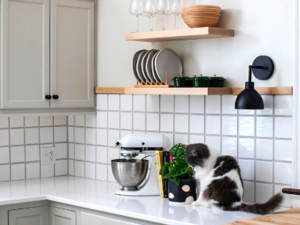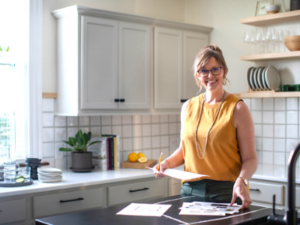Budget and Timeline Tips: Before Your Project Begins (Part 1)
August 31, 2020
These next few weeks, we will reveal all of the necessary steps in planning a successful home redesign and/or renovation. Not only will you receive valuable advice, but also interactive guides that will steer you directly toward the space of your dreams. Together, we will overcome all of the obstacles that have stood in your way, that have kept your home project on the back burner.
It’s time to get started.
Imagine something with me.
You look out into your driveway, and you see your car. It’s fairly worn, either coming close to or surpassing a decade in age, but ultimately still functional. It gets you to work every day, even if it makes a strange whirring sound when it starts up. The seats are scraped up from your dog, maybe stained from that one time you spilled your coffee. They’re still good seats, and they get the job done even if they’re not new.
But you decide it’s time for a new car. Maybe it’s a luxury choice to want something not has tattered and aged, or maybe it’s a necessity. And that strange whirring sound was your car’s way of saying the End Days are here.
No matter what got you to a place in which you’re ready to scour dealerships, almost no one would question that this choice is an investment. I mean, this new car would do the same job as your old one; it would carry you from place to place for many years to come. The monthly payments are justified because this is something you need, and it will pay for itself in due time.
Why is this perception not applied to other financial ventures, such as redesigning your home?
Maybe redoing your Kitchen is more of something you want rather than need, but maybe the need is rooted in wanting to finally freshen up your space, to update your dated appliances, and to create a gathering place that will renew your family’s joy.
Those wants are worth investing in because they have the potential to change your quality of life. But where do we start? And how do we define our budget for such an investment?
Redesign vs. Renovation
Defining your budget for a redesign or renovation can be somewhat of a snooze fest. But the preparation is similar to that of the planning of a skydiving event. Without the proper training and supplies, the result could be a total disaster. Understanding what it is you really want to accomplish and doing the necessary work to prepare will help you come out on top.
When a client tells us they want to renovate their space, we ask them to dig deeper: What kind of renovation?
Sometimes we say we want to renovate when really we just want to redesign, and the budgets for either can be very different. Below is a clearer way of looking at it.
Find where your project fits.
-
After you’ve figured out if you want to redesign or renovate (or both!), then it’s time to make a list. Ask yourself, “What would really make me happy?” Jot down the changes you most want to see in your space, and don’t hold back. Be as extravagant as you want.
-
Then comes the more difficult part: Pick your top two to three items. These are the changes you want most and will serve as the prize we keep our eyes on throughout the project.
As the project progresses, you will most likely need to compromise features on your list due to budget or time restrictions. This is totally OK and very much a possibility for any interior design project. But this is why you chose the two to three items you feel most closely attached to as those are the items we will seek out to accomplish. No. Matter. What.
Outlining Your Timeline and Budget
The timeline and budget of your project are not necessarily mutually exclusive. That is to say, a budget can determine the timeline of your project and vice versa.
For example, a tight deadline can sometimes mean that the materials available to you will be limited since some items may be out of stock, and you’re unwilling to wait for them to restock. Additionally, you may need to pay more for rush delivery on items, especially if you’ve set out to finish your project before an explicit date.
In most cases when outlining a timeline and budget, you can only choose two: Good OR Fast OR Cheap. In a perfect world, we’d have all three. But knowing which two elements are most important to you will only bring more power to your decision-making, in the end.
That being said, there is much to consider when determining the proper budget for a project. For instance, it’s not enough to know which features you’d like to change; you also need to figure out how and with what you would like to make those changes. The materials you choose to use to replace or update the features of your newly designed space will directly influence your budget.
Let’s say you’re looking to change up your Kitchen counter. You could use a laminate, which is cheaper than most materials. But maybe you want to stretch the budget a little more to accommodate for a surface that will be long-lasting under wear and tear, so you explore solid surface countertops. This will be more expensive, of course. If you’re considering the higher end of a budget entirely, then maybe a quartz or marble counter would suit your dream space better. It all depends on what you decide you want most (and maybe that is the marble countertops), and then working within what you are able to afford money and time-wise.
It’s Okay to Feel Overwhelmed
Feeling overcome by information overload? We’d be surprised (and impressed) if you weren’t. But you’re not alone in this. Whether you choose to take on the help of a design professional or you want to take a crack at it on your own, know that you are capable of more than you realize, including staying level-headed in the chaos of designing a space.
No matter the depth of your budget or extent of your timeline, our team is always ready to offer a guiding hand.



